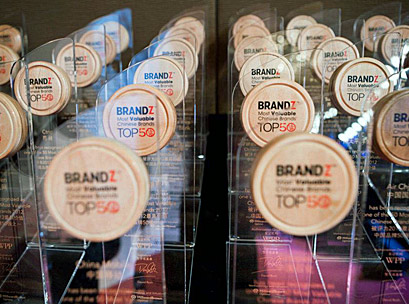China Mobile was again crowned as China’s most valuable brand in the BrandZ Top 50 most valuable Chinese brands.
The mobile service provider, with a brand value of US$50.5 billion, has retained the number one spot in the rankings. Leading financial institutions also continue to rise – with ICBC and China Construction Bank in positions two and three respectively.
China’s technology brands have seen tremendous growth, as Chinese consumers spend increasing amounts of time and money on Internet and mobile platforms. Baidu has moved up two positions to number four and Tencent has moved from position 10 to number five.
China’s private sector and entrepreneurs are seeing growing success in building Chinese brands, with the share of non-state owned enterprises (SOEs) in the top 50 rising to 27 per cent from 22 per cent in 2011.
Four new brands have joined the rankings this year. Bank of Communications debuted in position 15, its success due to both financial and brand factors. One fifth of its earnings came from retail banking, a key eligibility criteria for this ranking.
Beer brand Harbin joined the ranking in position 39; it linked its advertising to key sports events and carved a distinctive space in a competitive category.
The apparel brands Youngor and Semir were the other new entrants this year in positions 45 and 49, respectively. Youngor benefited from a shift in taste to smarter attire and Semir continued its focus on youth whilst investing in retail outlets and the supply chain.
Several standout brands have grown in value despite a challenging year such as men’s apparel brand Septwolves, airline company Hainan Airlines and white goods brand Gree.
Septwolves has increased its brand value by 44 per cent and is second only to Tencent in this year’s list of fastest risers. By focusing on its strategy to become the top-tier apparel brand in the lower-tier cities, and by carefully controlling its expansion, Septwolves has sidestepped competition from foreign brands and the issues of excess inventory that have affected some of the other brands in the apparel category this year.
While Chinese airlines faced a difficult environment due to increasing competition from domestic high speed rail links and rising fuel prices, resulting in a 22 per cent decline for the entire category, Hainan Airlines bucked the trend with a 23 per cent increase in brand value, moving up five places in the ranking. By concentrating on the customer, and by remaining heavily focused on the Chinese domestic market, the carrier, which first entered the rankings last year at number 46, rose to 41.
The closure of a white goods subsidy programme at the end of 2011 badly affected the home appliances category, resulting in a 14 per cent drop for the sector. However, Gree has grown to control over 50 per cent of the market in China and become the number one air conditioner brand in the world by sticking to its core markets of air conditioning, creating a clear message and offering its customers a wide choice of models.
“This year’s BrandZ Top 50 gives an insight into how an expanding group of privately-owned Chinese brands are growing value by meaningfully differentiating their brands,” said Adrian Gonzalez, head of Greater China, Millward Brown, which manages BrandZ.
BrandZ’s study reveals that brands are becoming more important than ever for Chinese consumers, playing an increasingly significant role in their consumption choices – a trend that is well-established in first-tier cities and becoming more deeply entrenched in lower-tier urban populations.
GB






